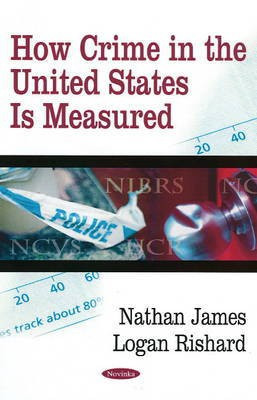How Crime in the United States Is Measured(English, Paperback, James Nathan)
Quick Overview
Product Price Comparison
Crime data collected through the Uniform Crime Reports (UCR), the National Incident-Based Reporting System (NIBRS), and the National Crime Victimisation Survey (NCVS) are used by Congress to inform policy decisions and allocate federal criminal justice funding to states. As such, it is important to understand how each program collects and reports crime data, and the limitations associated with the data. This book reviews (1) the history of the UCR, the NIBRS, and the NCVS; (2) the methods each program uses to collect crime data; and (3) the limitations of the data collected by each program. The book then compares the similarities and differences of UCR and NCVS data. It concludes by reviewing issues related to the NIBRS and the NCVS. The UCR represents the first effort to create a national, standardised measure of the incidence of crime. It was conceived as a way to measure the effectiveness of local law enforcement and to provide law enforcement with data that could be used to help fight crime. UCR data are now used extensively by researchers, government officials, and the media for research, policy, and planning purposes. The UCR also provides some of the most commonly cited crime statistics in the United States. The UCR reports offence and arrest data for 8 different Part I offences and arrest data for 21 different Part II offences. The NIBRS was developed by the Federal Bureau of Investigation to respond to the law enforcement community's belief that the UCR needed to be updated to provide more in-depth data to meet the needs of law enforcement into the 21st century. The NIBRS collects data, including data on offence(s), offender(s), victim(s), arrestee(s), and any property involved in an offence, for 46 different Group A offences and 11 different Group B offences. Despite the more detailed crime data that the NIBRS can provide, nation-wide implementation of the program has been slow, for a variety of reasons, including cost considerations. The NCVS is the primary source of information on the characteristics of criminal victimisation, and on the number and types of crime not reported to law enforcement. The NCVS has four major objectives: (1) to develop detailed information about the victims and consequences of crime, (2) to estimate the number and types of crimes not reported to police, (3) to provide uniform measures of selected types of crimes, and (4) to permit comparisons over time and population type (e.g., urban, suburban, and rural). The NCVS asks respondents whether they have been the victim of rape and sexual assault, robbery, simple and aggravated assault, purse snatching/pick-pocketing, burglary, theft, or motor vehicle theft. In addition to collecting data on the number of victimisations, the NCVS gathers data on the details of each incident of victimisation.


